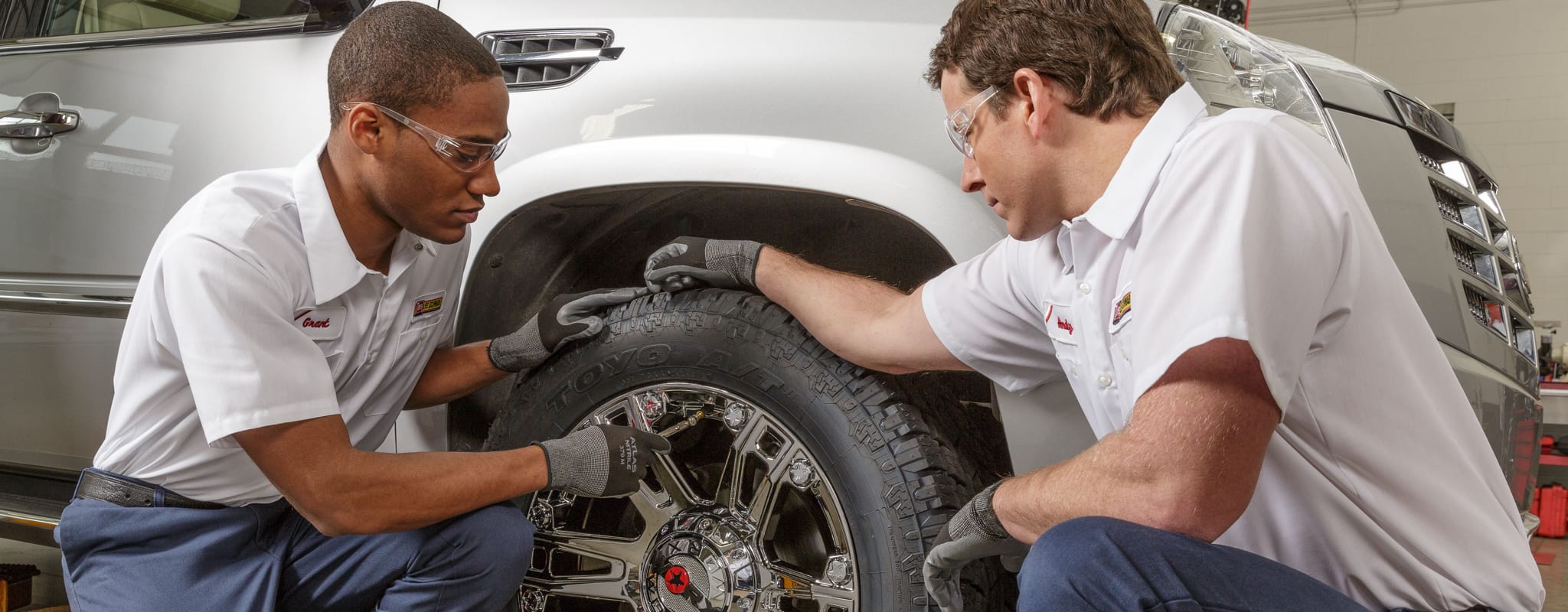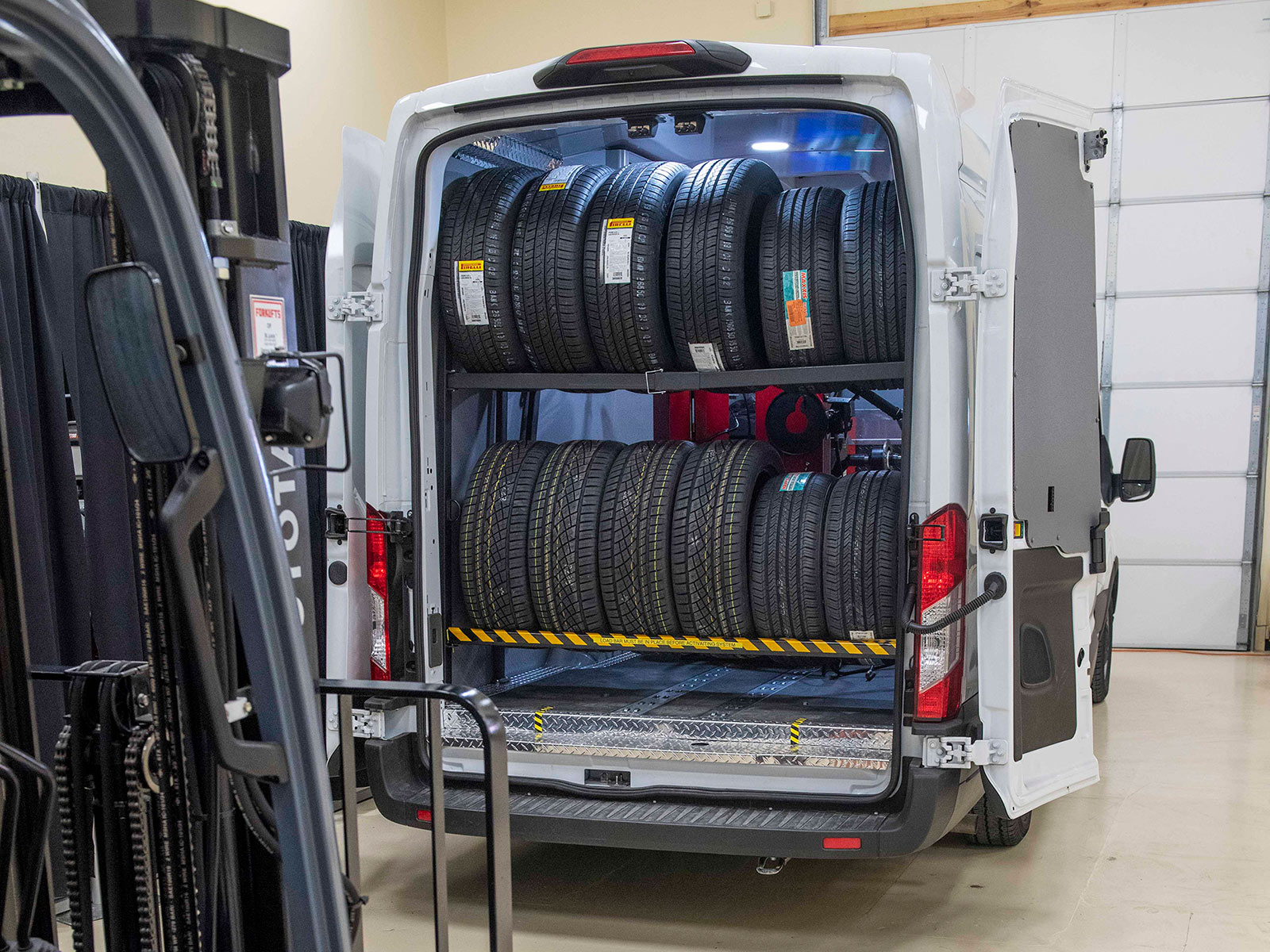Drive with Confidence: GMC Tires Service at Morris Tires
Drive with Confidence: GMC Tires Service at Morris Tires
Blog Article
Tire Solution: The Effect of Weather
When it comes to ensuring optimal efficiency and safety and security on the roadway, understanding the impact of weather condition problems on tire service is critical. GMC Tire Service. In this discussion, we will explore the detailed relationship between climate problems and tire solution, dropping light on the importance of weather-specific tire maintenance techniques and considerations.
Warm and Tire Performance
When subjected to heats, tires experience modifications in performance that can substantially affect lorry security and handling. The warmth created from long term driving or heat conditions creates the tire rubber to soften, causing minimized tread life and increased wear. As the rubber ends up being softer, the tire's grasp when traveling diminishes, impacting stopping ranges and total grip. In extreme cases, too much warmth can also trigger tire blowouts, presenting an extreme safety and security danger to the vehicle and its occupants.

Winter Effects
Winter problems can have a considerable effect on tire performance and safety and security. As temperature levels decline, tire rubber can solidify, causing reduced traction on icy or snow-covered roads. In winter, tires might additionally lose air stress extra rapidly, which can influence dealing with and gas efficiency. Additionally, cold temperature levels can trigger tire sidewalls to tense, boosting the threat of damages from holes or various other roadway dangers.
To reduce the impacts of winter on tires, it is important to consistently check tire stress and inflate them to the supplier's recommended levels. Utilizing winter season or all-season tires created for winter problems can likewise boost grip and hold on icy or snowy roads. Proper tire upkeep, consisting of normal evaluations for wear and damage, ends up being a lot more critical during colder months to guarantee ideal efficiency and security.
Rainy Conditions Influence
Tires with damaged footsteps are extra prone to hydroplaning, where a layer of water develops up between the tire and the roadway surface, leading to loss of traction. To fight this, drivers ought to routinely inspect their tires for appropriate tread depth and take into consideration investing in tires particularly made for wet problems.
Furthermore, rainy climate can also reduce visibility, making it testing for vehicle drivers to see the road in advance clearly (GMC Tire Service). In such conditions, it is necessary to readjust a knockout post driving speeds appropriately and preserve a secure following range to enable for abrupt stops. Correctly filled with air tires can likewise help in keeping control on wet roadways by supplying much better handling and hold
Snow and Tire Security
Snow-covered roadways posture one-of-a-kind challenges for vehicle drivers, emphasizing the value of correct tire option and upkeep. When driving in snowy problems, having the right tires can make a significant difference in security and efficiency. Wintertime tires are developed with special rubber substances and tread patterns to supply better traction on snow and ice compared to all-season tires. The deeper treads and sipes of winter tires help grasp the road better, lowering the danger of moving and slipping.

Moreover, drivers need to consider installing tire chains in severe snowy conditions. Tire chains provide extra traction by clutching the snow and ice, enhancing stability and control. It is essential to comply with maker directions when making use of and installing tire chains to protect against damages to the tires and vehicle (GMC Tire Service). By picking the ideal tires, preserving appropriate rising cost of living, and considering additional traction help like tire chains, drivers can boost their security when navigating snow-covered roadways.
Weather-Related Tire Maintenance
When encountered with various weather problems, appropriate tire upkeep comes to be a crucial element of car safety and efficiency. Weather-related tire maintenance encompasses a series of click here now methods intended at making certain optimal tire feature and durability in different climate situations. One crucial element of weather-related tire maintenance is tire stress regulation. Changing temperatures can cause tire pressure to vary, impacting traction and gas effectiveness. Regularly adjusting and examining tire pressure according to producer recommendations is vital for risk-free driving in transforming climate condition. In addition, tire step deepness plays a considerable duty in managing different weather elements. Tires with adequate step depth offer much better grip on damp or icy roadways, decreasing the risk of skidding or hydroplaning. Evaluating tire tread frequently and replacing tires when walk wear reaches a particular depth is important for keeping traction and security in adverse climate. By prioritizing weather-related tire upkeep, vehicle drivers can improve security, improve automobile efficiency, and lengthen the lifespan of their tires.
Conclusion
In verdict, weather problems have a considerable impact on tire efficiency and security. From heat influencing tire stress and use to chilly weather condition lowering traction, it is essential to consider the weather condition when maintaining and using tires.
In this discussion, we will certainly explore the elaborate connection between weather condition conditions and tire solution, dropping light on the relevance of weather-specific tire maintenance practices and considerations.

Report this page